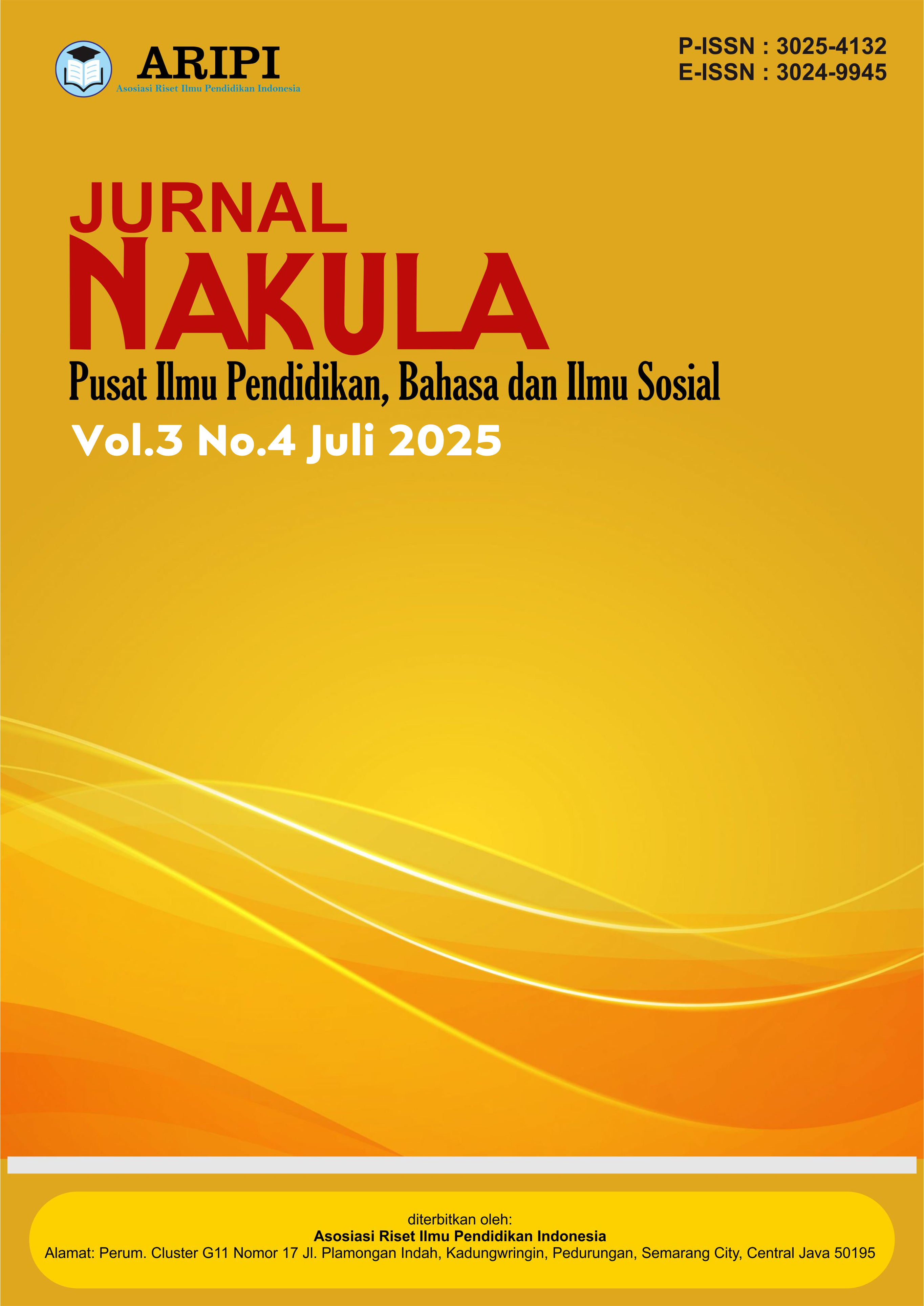Dampak Pendidikan Informal terhadap Perilaku Flexing Anak di Sekolah
DOI:
https://doi.org/10.61132/nakula.v3i4.1890Keywords:
Flexing Behavior, Informal Education, School ChildrenAbstract
Character education has become a primary focus in many countries, including Indonesia. Parents play a crucial role in shaping their children's character, but there are still many challenges such as generational differences, busy schedules, and ineffective communication. According to 2022 data from BPS, 75% of parents recognize the importance of character education, yet 60% of children still experience difficulties communicating with their parents.This study emphasizes that character education begins within the family as the first educational institution. Through role modeling, advice, and habits, parents instill moral values in their children from an early age. Informal education—occurring at home and in the community—plays an important role in shaping behavior, including preventing the flexing behavior or excessive showing off, which has become common among students due to the influence of social media and social pressures. Collaboration between family, school, and society is necessary to instill values of simplicity and empathy, so children grow into moral and responsible individuals.According to Creswell (2014), qualitative research is a process to explore and understand the meanings that individuals or groups assign to social or human problems. This process involves methods such as interviews, observations, and analysis of texts or documents.This study aims to deeply understand the phenomenon of the impact of informal education on the flexing behavior of children at SDN 07 Marisa. This approach is chosen because it allows the researcher to explore the perceptions, experiences, and views of informants regarding the informal education received by children and how it influences their flexing behavior in the school environment.
Downloads
References
Badan Pusat Statistik. (2022). Statistik pendidikan Indonesia 2022. BPS.
Biringan, J. (2021). Internalisasi nilai melalui pendidikan informal dalam prospek perubahan sosial. Jurnal Civic Education: Media Kajian Pancasila dan Kewarganegaraan, 4(2), 34–42. https://doi.org/10.36412/ce.v4i2.2371
Budiartini, N. P. A., Puspawati, S., & Suryosumunar, J. A. Z. (2022). Perspektif etika Hindu terhadap perilaku flexing pada pengguna Instagram. Sanjiwani: Jurnal Filsafat, 13(2), 217–227. https://doi.org/10.25078/sanjiwani.v13i2.1744
Creswell, J. W. (2014). Desain penelitian: Pendekatan metode kualitatif, kuantitatif, dan campuran (Edisi ke-4). Pustaka Pelajar.
Halodoc. (2023, November 8). Mengenal istilah flexing di media sosial, penyebab dan cara menghindarinya. https://www.halodoc.com/artikel/mengenal-istilah-flexing-di-media-sosial-penyebabdan-cara-menghindarinya
Hatimah, I. (2016). Regulasi dan implementasi pendidikan informal. Pedagogia, 13(1), 194–202. https://doi.org/10.17509/pedagogia.v13i1.3387
Mariana, I. (2022). Peranan keluarga, sekolah dan masyarakat dalam pembentukan karakter anak dalam pendidikan Islam. Jurnal Ilmu Pendidikan dan Sosial, 1(1), 1–5. https://doi.org/10.58540/jipsi.v1i1.2
Massuanna, M. W., Nahnul, I., Fadillah, I., Ramadani, K., & Baharuddin, W. W. (2024). Fenomena flexing di media sosial dalam aspek hukum pidana. Jurnal Pemikiran dan Pengembangan Pembelajaran, 6(1), 103–106. https://doi.org/10.31970/pendidikan.v6i1.1011
Nurhayat, E., & Noorrizki, R. D. (2022). Flexing: Perilaku pamer kekayaan di media sosial dan kaitannya dengan self-esteem. Flourishing Journal, 2(5), 368–374. https://doi.org/10.17977/um070v2i52022p368-374
Pristiwanti, D., Badariah, B., Hidayat, S., & Dewi, R. S. (2022). Pengertian pendidikan. Jurnal Pendidikan dan Konseling (JPDK), 4(6), 7911–7915. https://doi.org/10.31004/jpdk.v4i6.9498
Rifda, A. (2022, Agustus 8). Flexing: Pengertian, penyebab, akibat, dan cara menghindarinya. Gramedia. https://www.gramedia.com/best-seller/flexing-adalah/
Rosyad, R. A. (2017). Kualifikasi pemimpin lembaga pendidikan formal, nonformal dan informal lembaga pendidikan Islam. Jurnal Ilmiah Mahasiswa Raushan Fikr, 6(1), 107–123. https://doi.org/10.24090/jimrf.v6i1.2737
Setiardi, D. (2017). Keluarga sebagai sumber pendidikan karakter bagi anak. Tarbawi: Jurnal Pendidikan Islam, 14(2). https://doi.org/10.34001/tarbawi.v14i2.619
Sudiapermana, E. (2009). Pendidikan informal. Jurnal Pendidikan Luar Sekolah, 4(2). https://ejournal.upi.edu/index.php/pls/article/view/1220
Sukiyani, F. (2014). Pendidikan karakter dalam lingkungan keluarga. Socia: Jurnal Ilmu-Ilmu Sosial, 11(1). https://doi.org/10.21831/socia.v11i1.5290
Syaadah, R., Ary, M. H. A. A., Silitonga, N., & Rangkuty, S. F. (2022). Pendidikan formal, pendidikan nonformal dan pendidikan informal. PEMA (Jurnal Pendidikan dan Pengabdian kepada Masyarakat), 2(2), 125–131. https://doi.org/10.56832/pema.v2i2.298
Downloads
Published
How to Cite
Issue
Section
License
Copyright (c) 2025 Jurnal Nakula : Pusat Ilmu Pendidikan, Bahasa dan Ilmu Sosial

This work is licensed under a Creative Commons Attribution-ShareAlike 4.0 International License.





